#kristina hetherington
Photo
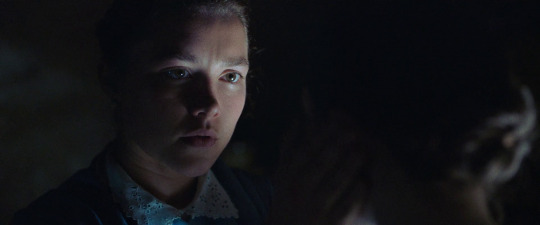

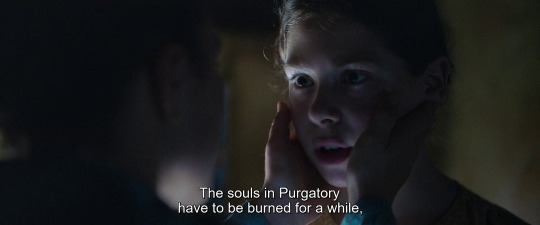
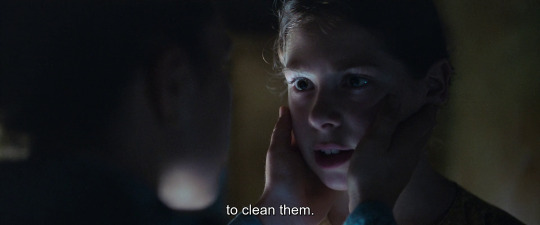
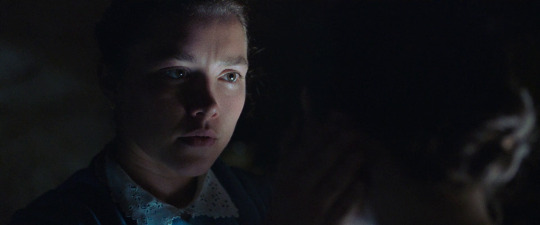
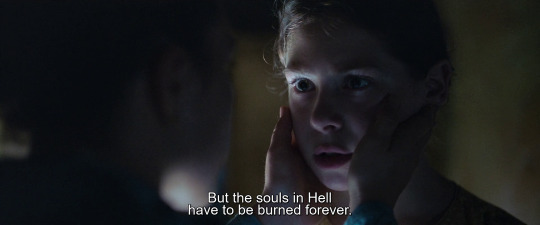
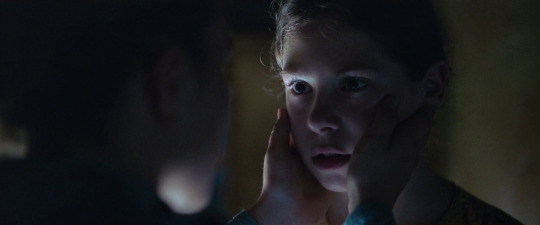


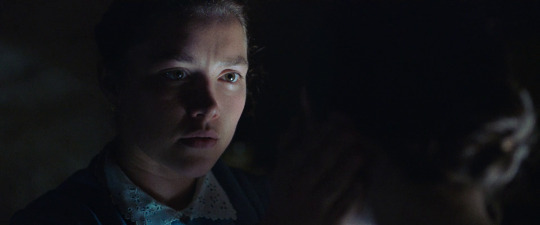
The Wonder (Sebastián Lelio, 2022).
#sebastián lelio#the wonder#florence pugh#kíla lord cassidy#emma donoghue#alice birch#ari wegner#kristina hetherington#grant montgomery#margot cullen#odile dicks-mireaux
184 notes
·
View notes
Photo

That's a story, Kitty. I'm looking for facts.
The Wonder, Sebastián Lelio (2022)
#Sebastián Lelio#Emma Donoghue#Alice Birch#Florence Pugh#Kíla Lord Cassidy#Tom Burke#Niamh Algar#Elaine Cassidy#Ruth Bradley#Toby Jones#Ciarán Hinds#Dermot Crowley#Caolan Byrne#Brían F. O'Byrne#Ari Wegner#Matthew Herbert#Kristina Hetherington#2022
6 notes
·
View notes
Text

Taylor Zakhar Perez and Nicholas Galitzine in Red, White and Royal Blue (Matthew López, 2023)
Cast: Taylor Zakhar Perez, Nicholas Galitzine, Ellie Bamber, Rachel Hilson, Uma Thurman, Sarah Shahi, Aneesh Sheth, Clifton Collins Jr., Juan Castano, Malcolm Atobrah, Stephen Fry, Thomas Flynn, Bridget Benstead. Screenplay: Matthew López, Ted Malawer, based on a book by Casey McQuiston. Cinematography: Stephen Goldblatt. Production design: Miren Marañón. Film editing: Kristina Hetherington, Nick Moore. Music: Drum & Lace.
The old lefty queer in me tried to resist the rom-com blandishments of Red, White and Royal Blue, but by the time Rachel Maddow and Joy Reid showed up for their cameos, I was hooked. Yes, it could have had more bite and edge. It might have shown the viciousness of the British tabloid press, or the Fox News spin on the same-sex romance of the son of a Democratic president and a member of the British royal family. It might have been more searching in its treatment of the atrophied American electoral process or the inane perpetuation of the monarchy. But we have the movies we get, and this one is formula filmmaking at its silkiest, a product it's often foolish to resist. In the end, everything we anticipate slides smoothly into place, so why throw grit into the gears? What's so bad, as they say, about feeling good?
8 notes
·
View notes
Link
'The Duke' Selected for 2020 Venice Film Festival
Made with investment from Screen Yorkshire
British comedy-drama THE DUKE will have its World Premiere at the 2020 Venice Film Festival.
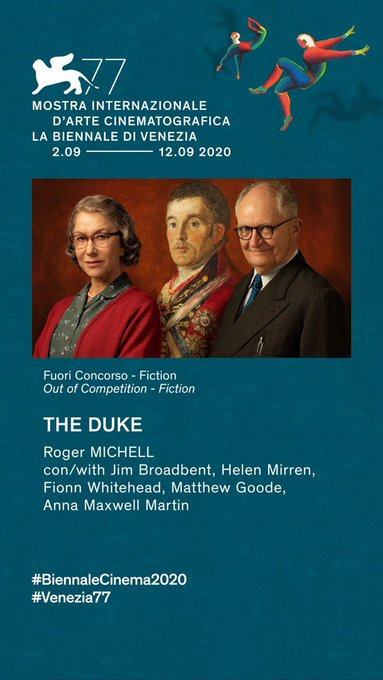
The film stars Academy Award winners Jim Broadbent and Helen Mirren and other cast includes Fionn Whitehead, Matthew Goode and Anna Maxwell Martin. The film was directed by BAFTA Award Winner Roger Michell from a script by Richard Bean and Clive Coleman.
The film is a moving true story that celebrates a man who was determined to live a meaningful life.
Filming Locations
‘The Duke’ filmed in Leeds, Bradford and London with investment from Screen Yorkshire’s Yorkshire Content Fund.
Synopsis
In 1961, Kempton Bunton, a 60-year old taxi driver, stole Goya’s portrait of the Duke of Wellington from the National Gallery in London. It was the first (and remains the only) theft in the Gallery’s history.
Kempton sent ransom notes saying that he would return the painting on condition that the government invested more in care for the elderly – he had long campaigned for pensioners to receive free television.
What happened next became the stuff of legend. Only 50 years later did the full story emerge – Kempton had spun a web of lies. The only truth was that he was a good man, determined to change the world and save his marriage – how and why he used the Duke to achieve that is a wonderfully uplifting tale.
First Major Film Event Since The Pandemic
As the world grapples with the Covid-19 pandemic, THE DUKE is a timely exploration of the need to recognise that we are all connected, that the health of each depends on the health of all.
THE DUKE is a Pathé, Ingenious Media and Screen Yorkshire presentation of a Neon Films Production. Nicky Bentham is the Producer and the Executive Producers are Cameron McCracken and Jenny Borgars for Pathé, Andrea Scarso for Ingenious Media, Hugo Heppell for Screen Yorkshire, Peter Scarf and Christopher Bunton.
Director Roger Michell reunites with his creative team from My Cousin Rachel: Director of Photography Mike Eley, Costume Designer Dinah Collin and Editor Kristina Hetherington. Make Up and Hair Designer is Karen Hartley Thomas (The Personal History of David Copperfield) and Production Designer is Kristian Milsted (Killing Eve).
Pathé will release the film in the UK in Spring 2021 and will also distribute the film in France and Switzerland as well as manage sales for the rest of the world.
________
*Exciting! ‘The Duke’ is the 3nd Matthew Goode film with investment from Yorkshire Content Fund!
Previous projects Official Secrets, and Death Comes to Pemberley (also Anna Maxwell Martin)

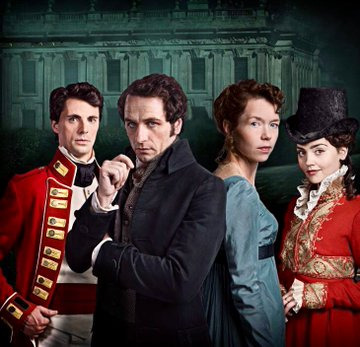
8 notes
·
View notes
Text
My Cousin Rachel (2017)
My Cousin Rachel (2017)
BBBB (out of 5) Orphaned Sam Claflin was raised by his loving, older cousin (also played by Claflin) who, once his ward has arrived at adulthood, spends his last few years in southern Europe for the good of his health. Knowing that his guardian took a wife before dying, the younger Claflin is determined to enact vengeance on what he believes is a gold-digging black widow, but when she moves…
View On WordPress
#Alice Normington#Andrew Havill#Andrew Knott#Attila G. Kerekes#Austin Taylor#Bobby Scott Freeman#Chris Gallarus#Daphne Du Maurier#Dinah Collin#Don Whistance#Harrie Hayes#Holliday Grainger#Holly Sohail#Iain Glen#Katherine Pearce#Kevin Loader#Kristina Hetherington#Louis Suc#Mike Eley#Poppy Lee Friar#Rachel Weisz#Rael Jones#Roger Michell#Sam Claflin#Stuart Davidson#Tristram Davies#Vicki Pepperdine
0 notes
Text
ART OF THE CUT with the editors of “The Crown”
DOP Adriano Goldman and editors Úna ní Dhonghaíle and Pia Di Ciaula.
I felt like I had this Art of the Cut conversation sitting down to tea with two brilliant colleagues. I have been watching The Crown on Netflix and the editing plays such a great part of developing the rich character studies, drama and social commentary that makes the series so much more than a “behind-the-scenes” glimpse at the history of the royal family.
While the series has been edited by a considerably larger group of editors, I was able to discuss it with two of them, Pia Di Ciaula and Úna ní Dhonghaíle.
Di Ciaula is a Canadian who has spent most of the last 20 years in London. She has a long list of both feature films and TV credits, starting in the early 1990s. Her work includes television series, Tess of the D’Urbervilles (2008), The Street (2007-2009), and feature films, Silk 2007), Tyrannosaur (2011), and Belle (2013). Her next film, Journeyman, will be released in 2018 and she’s currently editing A Very English Scandal, directed by Stephen Frears and starring Hugh Grant.
ní Dhonghaíle is Irish with feature and TV credits going back to 1997. Her TV work includes Golden Globe nominee The Missing and she received three BAFTA nominations for editing White Girl, Ripper Street, and The Missing. She also cut Wallander (2010-15), Upstairs Downstairs (2010), Doctor Who (2011). Her feature film work includes Frank Ned and Busy Lizzie (2004), King Kennedy (2011) and the upcoming feature film Stan and Ollie, set to be released in 2018.
I used the British spelling of words to do honour to their lovely accents and to remind readers that I try to feature talented editors from around the world.
The Crown (L to R) Elizabeth, Prince Philip. Queen Elizabeth II formally makes Philip a British Prince
Hullfish: Where did you edit The Crown?
ní Dhonghaíle: We edited in Molinare in Soho, London, working on Avid Media Composer.
Hullfish: I have talked to other editors who worked at that same production facility. That must be quite popular.
ní Dhonghaíle: It is one of the leading post-production houses in London. It’s wonderful.
Di Ciaula: They occupy two buildings divided by a cobblestone courtyard. They provide on-line facilities and create some of our visual effects and grade. It’s close to Liberties and Carnaby Street so it’s a wonderful place to work. (they both burst into laughter).
Hullfish: Wait. What’s Liberties?
Di Ciaula: It’s a famous department store built from the remains of an old ship. The store has dark hardwood floors that creak loudly, it’s haunted but it’s a beautiful place. We buy each other presents from there so when someone walks towards you with a purple Liberty’s bag, you know you’re in for a treat.
Hullfish: I watched The Crown with my wife and we both loved it. It’s very personal and lovely. How long did you each work on the series?
The Crown (L to R) Prince Philip, Elizabeth Elizabeth and Philip discuss Charles’ education
ní Dhonghaíle: There were seven editors in all on series one, Kristina Hetherington, Stuart Gazzard, Luke Dunkley, Mark Eckersley, Yan Miles, Pia and myself. We worked on different schedules because we all worked with different directors. We had four brilliant directors, Stephen Daldry, Philip Martin, Julian Jarrold and Ben Caron. Netflix/Leftbank envisioned a more filmic approach for The Crown, with each Director shooting two episodes per block and each episode having their own editor. This enabled us to assemble and edit our own episodes and collaborate individually all the way through to the grade and mix. I loved working with Julian Jarrold on Episode 6 ‘Gelignite’ and Ben Caron on Episode 7 ‘Scienta Potentia Est‘. The fine-cutting time was roughly 7-8 weeks per episode.
Di Ciaula: My schedule was different because I worked with the genius Stephen Daldry on block three. I edited the second episode, ‘Hyde Park Corner.’ Stephen shoots a lot of material. He usually uses two cameras and we often have a second unit, directed by the wonderful Justin Martin who has collaborated with Stephen for about ten years. For my episode, they traveled to South Africa because the show dealt with the Commonwealth Tour and a safari in Kenya. I also received tons of footage of animals to integrate into the film because there were none present during principal photography. My contract lasted for five months because I was committed to cutting Paddy Considine’s film ‘Journeyman’.
Hullfish: So sometimes when you’re editing for directors shooting multiple episodes, they’ll often shoot scenes that are for other episodes.
The Crown Season 1
ní Dhonghaíle: Yes, you might have lots of material on one day and very little the next and so the longer assembly time allowed you to build and craft the episode whilst awaiting more footage. Peter Morgan is a master storyteller and during the shooting and editing of series one, he was writing and developing series two. He realised that some actors may not return to series two, but they might appear in flashback scenes and so he wrote and shot these scenes during the first series. This really takes vision and courage, but it has paid off nicely! I had one scene in my episode this year featuring John Lithgow, which Stephen Daldry shot last year and it was wonderful to see it slot into place perfectly.
Hullfish: There was a very funny scene with John Lithgow in a bathtub right, with the secretary nervously standing outside the door.
Di Ciaula: Peter Morgan’s scripts are superb! His dialogue is poetic and he writes with such an interesting turn of phrase but it’s also very typical of Stephen Daldry to add more humour and to direct in a very magical and interesting way. Stephen introduces Churchill with a close up of a glass of whiskey and a cigar. And then we slowly reveal Churchill in the bathtub with the secretary standing outside the bathroom trying to deliver important documents. Peter’s brilliant dialogue encapsulates Churchill with his line ‘You have to be a monster to defeat Hitler’. Churchill repositions himself in the tub in order to take a nap, spills some water and Venetia slips on the water coming from under the door. Then Stephen added Churchill’s beautiful dog drinking the bath water. Working with Stephen and Peter was great fun and an amazing opportunity but it came with a huge responsibility. I worked incredibly hard but it’s been one of the most rewarding experiences of my career! It was also wonderful working with John Lithgow, Claire Foy and the entire fabulous cast, getting such great performances that you couldn’t help but fall in love with these characters.
Screenshot of the Avid bin for the Churchill bath scene. All images in the article can be right-clicked and opened in their own window for larger, more detailed viewing.
(On a technical note, if you look at the clip names in the bin for Churchill’s bath scene, you’ll notice that we were using the British slating system. On season 2, we decided to switch to the American slating system. It seemed more efficient due to so many episodes, so many units, and so many countries; the episode and scene numbers were most important and easier to track than slate numbers. This bin also illustrates my selected clips and updated cuts.)
ní Dhonghaíle: I love the way Peter Morgan writes, his scripts are alive with humor, compassion, and intrigue. He really gets under the skin of the characters and it was a real privilege for me to edit on this show. His stories are grounded in true historical events, but he breathes life and subtext into these events.
Hullfish: Subtext is one of those things that really fascinates me. Can either of you speak to me about how, as an editor, you try to bring out or enhance the idea of the subtext beyond the basic plot?
The Crown Season 1
ní Dhonghaíle: The subtext is always revealed in ‘the unsaid’. In episode six, for example, the story centred around the Queen’s promise to allow her sister Margaret to marry Peter Townsend, a promise she will break before the end of the episode. One of the scenes that best exemplifies subtext for me is the scene when Margaret and Peter come to Buckingham Palace and ask the Queen’s permission to marry. The performances were great and there were covert looks passing between Margaret and Peter, but essentially there was a lot of dialogue with four people sitting at the dining table and the Queen did very little talking. When I was cutting it, I found Claire Foy’s performance was so beautiful and her silent listening and reacting to what was been asked of her was ‘the thing’! As Editors, we can carve out the emotional impact of the scene by playing words on the listener and this can be infinitely more interesting than showing the character who is speaking. The use of sound also enriched the subtext of this scene because there was a ticking clock in the background and I found that at the moment of the disjoint when the Queen realizes what Margaret is asking of her, if I disjointed the ticking of the clock it had an unconscious visceral effect on the viewer. It’s very subliminal, but when the sound of the clock began to disjoint, the audience would feel uneasy. This seemed to reflect the inner turmoil of the Queen. In another guise, it could just be a great scene of people talking around a table, but with the high level of performance by the cast, we were able to let the audience feel the Queen’s dilemma and the subtext was revealed.
The Crown Season 1
Hullfish: Pia? Thoughts?
Di Ciaula: Yes, I agree. Finding the heart of the narrative is key and when you reveal the subtext, it elevates everyone’s contribution. I’ll backtrack to the rushes stage to illustrate my process. I read the script before the shoot but I don’t like reading it again because I like the rushes to wash over me. If the subtext is present, then I get it and I see how to shape the scene. If it’s not, you have to work harder in editing to make it more obvious, stay longer on a character, show details of what they’re really feeling, or use sound as a device. Words are important but non-verbal communication can be even more powerful. An image can reflect what a character is feeling better than what they’re saying which is sometimes in conflict with the truth. Stephen likes to add a lot of internal turmoil in the subtext so that we get under the skin of the characters. If an actor can reveal subtext without words, it strengthens their performance and makes the scene more interesting.
But Una, you reminded me of another point – sound. We all did very intricate sound-work on the show. I often had up to 24 tracks, 6-8 dialogue, 4 ambiences, 4 sync effects and 6-8 music tracks. Depending on the scene, sometimes I would also add foley footsteps if it was important for the character.
The Crown Season 1
Songs are another emotional aspect. Stephen likes to shoot surprises, so for instance, when the Queen leaves Kenya after the king’s death, a little Kenyan boy watches the plane taking off and begins singing a sweet and somber song. Stephen adds these little touches that affect you emotionally but weren’t originally scripted. The other heart-breaking song that comes to mind is in episode one when the King sings a Christmas carol wearing a paper crown. Kristina cut this episode and I remember sobbing when I first watched it.
Hullfish: You’ve both spoken glowingly about your directors which is kind of unusual for television because in the US method, the director is much more of a hired gun and the producer is the standard bearer for the show, but you also said it was done a little more in the film style than TV. Of course, editors always want to serve their director, but the director/editor relationship is different in television than film.
Di Ciaula: I started my editing career in Toronto, mainly working for American Networks and although I loved it, I was also frustrated because directors were replaced by producers within a couple weeks of the director’s cut. I didn’t have a problem with producers but it was the directors’ vision that I was trying to reveal. On one MOW, I was flown to LA to finish the film without the director. Understandably, the director was upset and felt betrayed by me. I tried to explain that no one knew the material better than I did and that I could protect the film and his vision. If I had walked away, we would have lost everything that we had tried to achieve together. So he calmed down because he trusted me but I kept him informed every day so it all worked out but this was the last MOW I edited in North America. I then moved to London and started editing feature films, collaborating with terrific directors and brilliant actors like Judy Dench, Kate Winslet, and Ewan McGregor. So when I was offered The Crown by Stephen Daldry, I knew it wouldn’t be your average TV show; I knew every episode would be exceptional. In this respect, Stephen keeps me on until the end of Post in order to check VFX, ADR, conform, grade, music and mix. Combining Peter’s scripts with Stephen’s vision, the calibre of talent from all the HOD’s, Adriano Goldman, Michele Clapton and Martin Childs, and the guidance and support from Netflix, Andy Harries and Suzanne Mackie allowed us to concentrate on creativity and treat every episode like a feature film.
The Crown (L to R) Prince Philip, Elizabeth. Philip and Elizabeth share an intimate moment
ní Dhonghaíle: There is a difference between America and Europe because, in Europe, we may have more of an ‘auteur’ or director-centred industry. The director sets the tone of the piece and is allowed the full edit time to carve out his/her vision. With such tight schedules, you become each other’s allies. Trust and a shared vision is key. We were very lucky to have these brilliant directors with brilliant producers (Peter Morgan, Andy Harries, Suzanne Mackie and the Netflix team). Once the collaborators have a shared vision, you are never really stuck between the producer and director — you might be a little bit, but —. (Pia laughs) and yes, you have to negotiate sometimes, so that everyone is happy with the solution to the notes. Everyone might have a different solution to a problem, but they at least agree on the problem. As an Editor, part of our art is to listen and to find these solutions together. The US model intrigues me because, on the one hand, it seems your directors might leave the cutting room after four days, but on the other hand, the legacy and vision of the writing/directing team are obviously still felt because such incredible TV shows are being produced in America at the moment.
Hullfish: And I have to say that with this director discussion, I’m not talking about feature directors. I’m only talking about TV directors. The thing with editors in American TV that I’ve spoken with is that they need to shift their allegiances. The director is certainly given tremendous respect, but they have maybe four days or five days with the material in the cutting room and then they have to step aside for the producers. And the editors then shift their allegiance to the producers who are really in control of the material. You have to deliver on the director’s vision but because the directors come in and out of the series and the editors tend to stick with a show, they are the stewards of the overall vision of the show along with the producers and understand the characters and the storylines over multiple seasons. The editors understand the cutting style of the show or at least what the producers are going to allow in the end because in America TV is more writing-centric and the producers are really more writers than they are producers usually. So it TV, you have to be totally committed to the director, then they leave and now you’re totally committed to the producer… it’s kind of like serial monogamy.
The Crown Season 1
ní Dhonghaíle: (laughs) In Europe, our writers are also more often executive producers on their own shows. This allows great direct communication and collaboration. Peter Morgan is fearless in throwing out ideas and discussing ways of improving the story. He helped create an open discourse and we had a shared commitment to making this series something unique. We were all on the same page.
Di Ciaula: This also reminds me that during the first season, Peter invited all the editors on Friday afternoons for tea and we would bring one edited scene each. It was like show and tell. We would laugh, cry and discuss it, but it allowed the editors to collaborate and share what we were doing…“Oh, what are you using for that temp track?”…”where did you get that sound effect?”…”may I borrow that shot?”. Those Friday afternoons were marvelous. Peter wanted an open door policy and he achieved it. It was great fun, wasn’t it Una?
ní Dhonghaíle: It was wonderful as it allowed us to glimpse the series as a whole. It was a real honour to see the other episodes in their infancy and to see how the characters developed throughout the series. It was also a time for playfulness, to discuss storytelling techniques, sound design and raise the bar on ideas. I remember, Julian Jarrold and I had tried a music cue on the Queen mother’s arrival to Buckingham Palace and although we loved it, we wondered if it might be a bit too big and bombastic. That Friday, Pia showed her first cut of the ending of episode 2 and the music built to a glorious crescendo – it was jaw-droppingly brilliant! Julian and I turned to each other and agreed that our music was not too big, in fact, we were now emboldened to go further.
Di Ciaula: Working with Stephen Daldry is liberating because nothing is big enough, loud enough, or extreme enough. (laughs) The sky is the limit!
ní Dhonghaíle: All of the directors of the first season — Philip Martin, Stephen Daldry, Julian Jarrold and Ben Caron, — all of those guys really wanted to have fun with this material and shed new light on the royal family.
The Crown Season 1
Hullfish: Both of you have talked about character, which is obviously critical. When you’re watching dailies do you try to let these scenes wash over you or because you’re on such tight deadlines, you realize that you can’t watch these passively like an audience would. You’ve really got to be concentrating on marking moments finding moments of character that you can then use when you’re editing? How are you watching dailies and what are you actually doing while you’re watching?
Di Ciaula: My assistant Charlotte Bradley assembles the rushes into a sequence, in slate order. Every camera has its own sequence. I take notes describing the action but also about my reactions, if I laugh or cry if I’m scared or shocked; I don’t want to forget my first unbiased impressions. I have to watch every frame of the rushes because there are great moments that can be missed if you only watch selected takes. I create a ‘selected’ sequence, add all the characters’ on-camera lines from every take, in script order. I make a copy of this ‘selected’ clip and then it’s a process of elimination so I’m more Jenga than Lego. By juxtaposing the many takes, I find it easier to compare the nuance in performances. I delete what I don’t like, find the subtext, sculpt, shape, overlap or pre-lap dialogue, check the rhythm, prepare VFX comps that Charlotte enhances beautifully; I add sound effects and ambiences, add temp music if required until I have the best scene possible. Stephen doesn’t want weekly assemblies; he prefers edited scenes the same day that I receive rushes from the previous day’s shoot so I’m under constant pressure but it’s creative pressure, not usually stressful. These daily cuts allow Stephen, Justin and myself the opportunity to discuss pick-ups; help to inform how they shoot the following day, and they boost the morale on set.
The Crown Season 1
ní Dhonghaíle: I also have a documentary background, so I am also well versed in watching everything. I look for best performance, truthful delivery and any moment that speaks to me. Editors are the first audience and if it moves you when you are watching rushes, it will move the viewer. I trust my instincts and on a practical level, I begin a ‘Selects’ reel for each scene, which will have everything that I felt was worth taking. If watched on its own, it will look like this poetic, repetitive, possibly lyrical sequence that makes no sense, but it helps me to memorise the material. If I find a moment in the wide shot for example, perhaps the middle of the scene, I shall build around that and withhold using the wide shot until this moment. Equally, if the close up has the power for a particular moment, I will not use it or overuse it before this moment, so as to maintain its emotional impact. Understanding the mise-en-scene is also very important and the editor must find the story within the shot or the interplay between the shots. Sound and music enrich the edit so the first assembly/cut feels complete. For my directors, I send the first cut of the scenes on the Friday of every week and I only send scenes daily if we had a concern or wanted to discuss anything additional that we might need to shoot. My directors were excellent and we were in daily contact. I could give them a first reaction to the material and a big thumbs up as well. Even on a show like this, with a healthy budget and great support system, the directors, actors, and crew were pushing themselves with long working hours and high ambition and keeping morale high was important, Occasionally I would send a jpeg of a beautiful shot to the cinematographers Adriano Goldman and Ole Bratt Birkeland and the directors to say ‘huge congratulations this footage is beautiful’! It’s important as the editor to give the good news as well as any suggestions or concerns. You do not want to derail them or throw them off course as they prepare for the next day shoot, but if you see something, you must flag it up.
Hullfish: I was thinking about Pia having to deliver a scene so quickly. She has to do that because she’s asked to do it, but at the same time, you want to present something that is so good that it doesn’t make the director worried about their own work.
Di Ciaula: I have to send Stephen the best cuts possible which also allows him to experience my first gut instincts without any influences. Some directors give editors notes before they assemble but I think they’re missing a trick because an editor is unbiased and not aware of issues on set so they come to the material fresh and may have a new perspective. If I had a choice, I would send the sequences the following morning because I prefer to sleep on things and have some distance. The work I do the following morning is invaluable so if I improve a scene tremendously, I simply send Stephen the updated version the following day.
Hullfish: I love the idea of the Friday afternoon tea with the editors. We are kind of solitary. I mean obviously we work with directors and assistant editors, but it’s not often that you get the chance to spend time with other editors discussing things. It’s one of the reasons why I do this series, to be honest is because how often do you get to find out how other people work? I just love that idea of bringing the editors together to see each other’s work, be challenged by each other, be a community. Tell me a little bit about what you think the benefits were.
ní Dhonghaíle: The workload is so high that it’s very easy to let an idea like this slip away, but I think Peter Morgan was insightful to suggest it. It was like a writer’s room for directors, producers, and editors and it would be wonderful to nurture. I think it’s very important as an editor because we are not editing these blocks in isolation. Our audience will often binge watch a box set and we should review the episodes in the same conditions to ensure clarity of storytelling, continuity of style, development of character and if a plot point is planted in one episode, that it might be paid off in a later one. When I was editing Kenneth Branagh’s Wallander in 2014, we often used echo images, for example, images that would jog the audience’s memory of something that happened in a previous episode or series. I loved this idea as it made for a more dynamic discourse for the audience too.
Di Ciaula: Those sessions allowed us to gel as friends, collaborate more and really raise the bar. Everyone was experienced and talented so there was a healthy competitive spirit that kept us on our toes. I’ve never had editor-friends in London until The Crown. Everyone is wonderful and inspirational.
Screenshot of Avid bins and Project window from The Crown. This is not really the way the editors look at the bins. All images in the article can be right-clicked and opened in their own window for larger, more detailed viewing.
Hullfish: I’ve worked with teams of editors before and I have to say that it’s a group that usually wants to see each other succeed instead of one-up each other most of the time.
ní Dhonghaíle: That’s true and our craft allows a more collaborative stance because even if you share music ideas for example, our individuality is revealed and even when you use the same piece of music it will feel different because you can use it differently, or use a different motif.
Hullfish: It could even be something you, as the editor, catch in a subtle performance thing that an actor does as part of their character and you can call it out to other editors or the directors and build it in instead of hide it. Is there some something to talk about concerning finding performance; utilizing what is true and honest in a performance, and really diving into that?
Di Ciaula: Stephen directs performances that are so wonderful and nuanced that you could literally choose any take but I had one shot of Claire Foy where she had to sit back in her seat on the plane and think. They repositioned the camera seven times within one take, and before the last one, Stephen said, “When you sit back, just hold your eye-line.” I spoke with Claire about that afterwards, and she said, “Why didn’t I think of that?” It was such a simple note that made the biggest difference. That’s how brilliant and detailed Stephen’s instincts are. Netflix and Leftbank allowed us to make The Crown with huge scale whilst encouraging us to pay attention to tiny details like a subtle eye-shift.
ní Dhonghaíle: The calibre of actor on The Crown was top drawer. All the leads and supporting cast, but also the guest and more minor characters rose to the occasion. With the directors stewardship and confidence building, everyone inhabited their part – it was like a Stanislavsky showcase! This meant that even before action or after cut, the actors stayed in character so we could mine these little stolen moments of private thought and use them within the scene. Sometimes, these moments were pure gold.
Hullfish: That’s exactly the kind of stuff that I was looking for when I asked that question, Pia, you mentioned listening to the director’s comments between takes as a way to get insight into the direction of the scene. We’re given so much footage now and the crews tend to just keep rolling through multiple “takes” but one of the advantages is that you can hear the director give notes to the actor which then, of course, gives the note to you.
Di Ciaula: Before I worked with Paddy Considine on Tyrannosaur, I disliked hearing the director’s voice because I was forced to fill the track. But I loved hearing Paddy’s comments because he was very enthusiastic and those directions also helped me to understand what he was searching for. I love hearing Stephen’s comments too because besides being informative, he’s also very funny. Like Scorsese, Stephen often walks on the set at the end of a take and whispers in the actor’s ear. I like seeing the concentration on his face and wonder what he’s thinking and how the next take will change or improve? He runs a very warm set and we all adore him!
Hullfish: Anything else you guys want to chat about? Anything I haven’t asked about the production?
The Crown (L to R) Elizabeth, Adeane, Philip. Elizabeth and Philip return from the world tour
ní Dhonghaíle: I think it would have been very easy to make this series about the royal family with this high level of actors and not to push the boundaries of cinematic storytelling. And that’s what I pay tribute to Peter Morgan, to all of the directors, Andy Harries and Suzanne Mackie and Netflix because they went into this with such a cinematic drive. They wanted to show something so ordinary on one hand, because we’ve all grown up with the royal family and know almost everything about them, but they wanted to show it in an extraordinary way. We were not complacent as a team and we wanted to push the boundaries and explore ideas that were exciting and unexpected in the way they revealed the narrative. This happened at every level, from script, performance, shooting, editing and music – the ambition was shared. When we heard that Hans Zimmer and Rupert Gregson-Williams would join us as the composers, it was a real boost to morale to know that we were in such wonderful, Oscar-nominated hands.
Di Ciaula: I love the fact that although we’re not making documentaries, Peter and Stephen are dedicated to presenting the truth and are open to suggestions. In ‘Hyde Park Corner’, I felt that there was a beat missing between the King’s duet with Princess Margaret and his death the following morning. I felt that the transition was too abrupt and that the King needed a moment to connect with Elizabeth to reinforce the emotion. I asked Stephen if we could shoot a scene of the King getting ready for bed and watching Elizabeth on TV during the Commonwealth Tour. Stephen asked the research department to find out what historically happened that night and to our surprise, he actually did ask about her progress on the tour. So Stephen shot it with a tracking shot and got an emotional performance from Jared Harris. Obviously, Peter had to invent and dramatise the dialogue when there were intimate scenes and during the audiences with the Queen and PM’s; even their partners weren’t privy to their conversations. During an interview, Tony Blair quoted some of the lines that Peter Morgan had written in ‘The Queen’ so obviously they were better than his own, (laughs) an example of life imitating art. Even when I have a script, I see every shot as a non-linear entity because you’re always restructuring and recreating scenes and adding extra off-camera lines.
The Crown (L to R) JFK, Jackie, Elizabeth, Philip. The Kennedys and Windsors meet
ní Dhonghaíle: It’s a tremendous responsibility, even with these imagined conversations because there is a responsibility on all of us who are making a film about real people, whether they are in the public domain or ordinary citizens, the responsibility is the same. We have to be as truthful and compassionate as we can be in telling their story.
Di Ciaula: We all feel a moral obligation to be truthful but to tell the story in a dramatic, humorous and epic way. I have to give credit to Peter Morgan because before we started shooting the first season the palace approached him and wanted to be a part of the production. Peter said absolutely not. He wanted free rein to dramatise the show any way he wanted. He wanted to show the behind the scenes. He wanted to show the darkness and intimacy between the Queen and Prince Philip. Otherwise, all of that would have been whitewashed and it wouldn’t have been as dramatic, truthful or entertaining.
And as far as the brilliant Hans Zimmer and Rupert Gregson-Williams are concerned, we were so lucky to have access to so many amazing soundtracks from their previous films which is mainly how we created our temp tracks and drew inspiration. I sometimes used 6-8 tracks of temp music so it was a complicated and intricate soundtrack in order to build rhythm, underscore emotion and increase tension. In season two, we were even luckier because we could draw from the score that had been composed for season one which had the right tone and tempo but of course, new music was composed as well.
Hullfish: Una, my background is documentary as well, and it’s not an easy jump to make to drama, though there are many very good documentary editors who have done it. How did that jump happen for you?
The Crown (L to R) Margaret, Tony Armstrong Jones Tony Armstrong Jones prepares to photograph Margaret at his studio
ní Dhonghaíle: After leaving school, I completed a four-year film degree in Dublin and then I specialised in film editing at the National Film and TV School (NFTS) in the UK 1995-98. One of my graduation films ‘Secondhand’, directed by Emily Young was a co-production with the Lodz film school in Poland and we won the top prize for the best student film in Cannes in 1999. For the next nine years, I edited feature documentary films that were shown in festivals, on TV and won many prestigious awards, but it was difficult to break into drama. Then in 2008, Wojtek Szepel the cinematographer of ‘Secondhand’ recommended me for a BBC drama ‘White Girl’, written by Abi Morgan and directed by Hettie MacDonald. I showed Hettie 40 minutes of one of my documentaries, which was edited in a visceral, present tense way with no talking head interviews or voice-over narration and she loved it and I got the job! So I was really lucky, it came from the roots of the short film-school graduation piece in Cannes and Wojtek never forgot me and I am indebted to him and Hettie.
Editors can be pigeon-holed and I would urge producers and directors not to pigeonhole anyone because part of my drama skill and craft comes from my years in documentary and also having trained on film. It has made me decisive and resourceful. I have a belief in my gut instincts and I remember my first instincts when I watch the rushes and find the best way to tell the story.
Hullfish: You both talked about the responsibility to these real people who are alive now. And I just talked to William Goldenberg who edited Detroit and all those people are still alive and well they’re not royalty, they’re human beings and he felt incredible responsibility to them in portraying that the actual people
ní Dhonghaíle: Yes that’s what I mean, I think as filmmakers we are all very loyal and responsible when we are telling the story of ordinary people and I think we needed to maintain that same level of loyalty and responsibility to these people who are in the public domain, such as the royal family or politicians. Sometimes it’s easier to be more cavalier when the people are in the public domain, but they are only human too. So the responsibility William felt, we felt too when we were making this series because the characters we portray live outside of the domain of our story. That’s what Peter does so beautifully in his writing, because although he uncovers the darker side of humanity, he always does it with compassion and that is the key.
Di Ciaula: Peter’s writing is truthful, based on historical events but he finds these tiny details that he dramatises beautifully and in a very respectful way. Even if it’s material that might be uncomfortable for the Royals, Peter treats them with humanity. I think that’s why the show appeals to everyone; we’re not protecting anyone or sugarcoating anything. And even if one wasn’t a Royalist when we started the show, many people fell in love with them…..
ní Dhonghaíle (interrupting): I couldn’t call myself a Royalist! (much laughter) …but I empathise with them in the stories we told.
Di Ciaula: Some people became Royalists after watching the show because they were portrayed honestly and their strengths and weaknesses were revealed equally. As a Canadian and part of the Commonwealth, I’ve seen the Queen’s image every day of my life so I have to say that I’ve learned a great deal about her history and struggles so I have more respect for her after my experience on The Crown.
Anyway Steve, I know we have to wrap this up but thanks so much for your interest in The Crown. Your articles are inspirational and it’s been terrific sharing our experiences with you and your readers. Let us know when you’re in London and we’ll all get together!
ní Dhonghaíle: Thank you, Steve, it was a pleasure talking to you. Best of luck with everything.
This interview was transcribed using SpeedScriber. (Transcribed in under 10 minutes with no wait for a transcriptionist.)
To read more interviews in the Art of the Cut series, check out THIS LINK and follow me on Twitter @stevehullfish
The first 50 interviews in the series provided the material for the book, “Art of the Cut: Conversations with Film and TV Editors.” This is a unique book that breaks down interviews with many of the world’s best editors and organizes it into a virtual roundtable discussion centering on the topics editors care about. It is a powerful tool for experienced and aspiring editors alike. Cinemontage and CinemaEditor magazine both gave it rave reviews. No other book provides the breadth of opinion and experience. Combined, the editors featured in the book have edited for over 1,000 years on many of the most iconic, critically acclaimed and biggest box office hits in the history of cinema.
The post ART OF THE CUT with the editors of “The Crown” appeared first on ProVideo Coalition.
First Found At: ART OF THE CUT with the editors of “The Crown”
0 notes
Photo

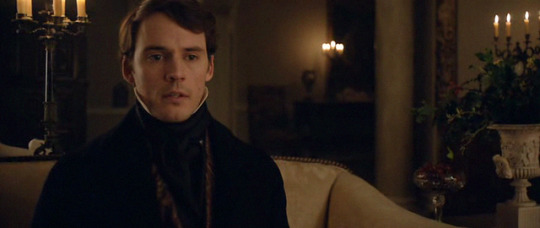

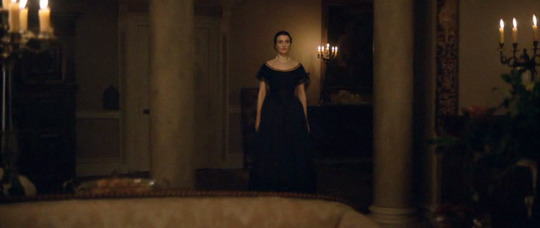




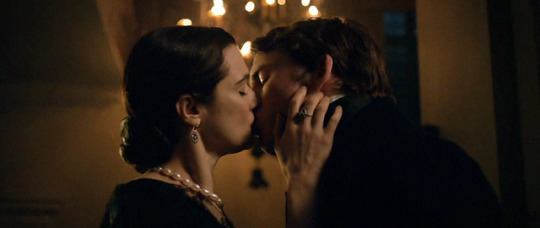

My Cousin Rachel (Roger Michell, 2017).
#my cousin rachel (2017)#roger michell#sam claflin#rachel weisz#kristina hetherington#mike eley#alice normington#dinah collin#my cousin rachel#sesión de madrugada#sesiondemadrugada#movie stills#movie frames#mi prima raquel#daphne du maurier
72 notes
·
View notes